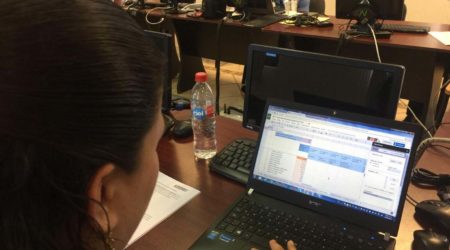Mobile Money Meets Microcredit: Creating an Evidence-Based Cross-Sell Strategy
By Kristy Bohling and Kelly Nguyen

Financial institutions, including those serving low-income clients, regularly turn to cross-selling to engage clients, but do not always consider the particular needs of the clients themselves. Some institutions hold an inherent assumption that certain products should be “good” for clients. However, because such assumptions are not always backed by hard data or client insights, these institutions may offer products that are not relevant enough, leaving the products unused by clients and expensive for institutions.
What does it take to enhance clients’ engagement and encourage them to actively use multiple products with an institution over time? SAJIDA Foundation, a microfinance institution (MFI) in Bangladesh offering credit, savings and insurance products, is using evidence from data analytics, business case analysis and client and staff research to find out.
Operating in a developed microfinance market, SAJIDA competes with numerous MFIs providing relatively similar credit and savings products aimed at supporting low-income clients’ income-generating activities. Focusing on the city center and suburbs of Dhaka and Chittagong, SAJIDA found that its loan officers were spending significant time chasing delinquent loans of clients who had left the city to return to their home villages. Upon further investigation and discussions with loan officers, SAJIDA understood that clients do not necessarily want to be delinquent — they’re just unsure about how they will pay their loans when they are so far from SAJIDA branches.
It turns out, as we at Bankable Frontier Associates learned from some loan officers, that clients who had left the city were paying back their loans by sending payments via bKash, Bangladesh’s leading mobile money service, to their loan officers. Though SAJIDA did not recognize bKash as an official payment channel, its clients and loan officers leveraged the platform to cover loan payments and collect savings deposits. In this case, it appeared that SAJIDA’s products were relevant to clients, but SAJIDA had an opportunity to optimize its clients’ experiences with the products by developing a new channel.
While the anecdotal evidence was compelling, SAJIDA needed more than a few stories to justify investing in a partnership with bKash. Upon further investigation through client research, SAJIDA found that more than 98 percent of SAJIDA’s clients know about bKash and over 50 percent of clients have already used the service. Business case analysis similarly suggested the potential for cost savings if SAJIDA allowed clients to pay loans and deposit savings through bKash, though this proposition would need to be tested. Considering that over 50 percent of SAJIDA’s clients were already cross-sold — that is, they have more than one voluntary product with the institution — it was looking for new ways to engage its clients and improve their experiences using multiple products in order to increase retention.
Ultimately, SAJIDA was able to embrace new opportunities in the market to provide new options to its clients. Through Optimizing Performance Through Improved Cross(X)-Sell (OPTIX), a special project of Rockefeller Philanthropy Advisors, funded by MetLife Foundation and managed by Bankable Frontier Associates, SAJIDA is pursuing initiatives such as a partnership with bKash to test ways to optimize cross-sell.
The organization is not alone in this pursuit of optimal cross-sell. SAJIDA, Banco WWB in Colombia, Cooperativa Acreimex in Mexico and Capital Aid Fund for Employment of the Poor (CEP) in Vietnam are all developing evidence-based cross-sell strategies to positively impact the institutions and their clients.
Impactful cross-sell approaches require this concerted focus on evidence, to identify opportunities and acknowledge barriers to cross-sell before implementing new initiatives. Like SAJIDA, the other institutions listed above are approaching new cross-sell initiatives by first analyzing data, assessing the business case and conducting client and staff research to direct institutions toward impactful strategies.
OPTIX Focus Note 2 describes more about these institutions’ experiences designing evidence-based cross-sell strategies. As the institutions pursue these initiatives, they will monitor the results to understand cross-sell’s impact on the client journey, providing insights that other institutions can apply to their own cross-sell initiatives.
This blog post was originally published on NextBillion.



